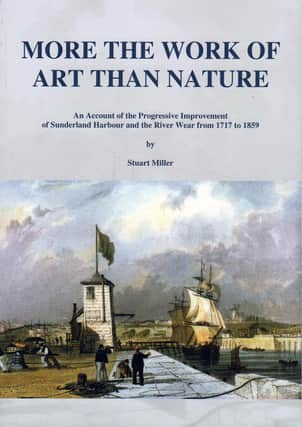ON THE WATERFRONT: Revealing book charts early development of city’s port


This well researched and illustrated 194-page A4 softback provides “an account of the progressive improvement of Sunderland Harbour and the River Wear from 1717 to 1859,” as explained in its subtitle.
1717 was a pivotal year in the development of the Port of Sunderland, as this was the year in which a body of commissioners was named under an act of parliament to improve the River Wear and make it navigable as far as New Bridge, Chester-le-Street.
Advertisement
Hide AdAdvertisement
Hide AdAs Chapter One explains, Sunderland was once a decaying fishing village bordering a shallow creek (ie the River Wear) but began its transformation into an industrial town with the growth of coal exports during the late 16th Century.
Nevertheless, the river mouth was still in its natural state with sand banks, shoals and shallow navigation channels, which together with haphazard erection of quays and wharves and dumping of ships’ ballast all contributing to making the harbour hazardous for vessels using the port.
As the book progresses, it details how these challenges were overcome (with construction of the first piers, early dredging and adoption of a quay line, for instance) and the subsequent development of Sunderland into a thriving industrial, ship-building and coal-exporting centre.
Considerable emphasis is placed upon the docks issue, with early abortive schemes being described in detail along with the construction and opening of North and South Docks.
Advertisement
Hide AdAdvertisement
Hide AdThe inadequacy of North Dock proved to be a boon for the promoters of the much grander South Dock scheme, the first stage of which opened in 1850.
An insight into the sometimes disparate relationship between the River Wear Commissioners (RWC) and Sunderland Dock Company preceding the takeover of South Dock by the former in 1859 is enlightening.
Not forgotten are the parts played in improving the harbour by eminent RWC Engineers of the era, including those of Messrs Shout, Pickernell and Meik and Murray. Appendices also provide fascinating statistics on the Wear’s coal trade, shipbuilding output and shipping.
Copies of this book (priced at £15 plus £2.50 p&p) can be ordered from the author by emailing [email protected].